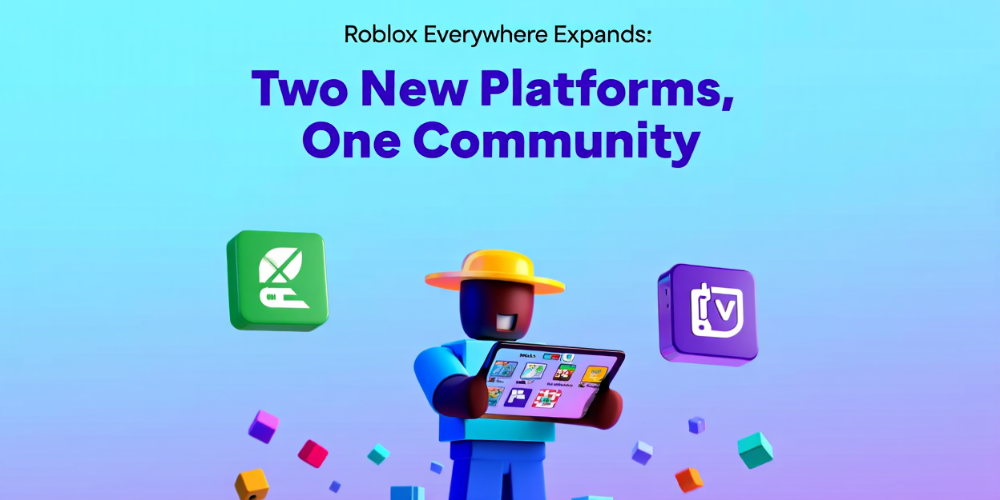
Roblox Everywhere Expands: Two New Platforms, One Community
- 2025-11-03
Roblox’s “Everywhere” vision keeps marching forward: per the newsroom update, the platform is arriving on two additional destinations, widening access while keeping your identity, inventory, friends, and progress intact. For players, this means more flexibility in how and where you jump into your favorite experiences—on the couch, on the go, or sharing a screen with family. For creators, it’s an opportunity to meet new audiences without rebuilding from scratch, provided your experience respects input abstraction, UI scaling, and performance budgets. The practical takeaway is simple: cross-platform parity matters more than ever. If your game feels great on touch and mouse but fumbles on a controller, you’re leaving growth on the table. This expansion isn’t just a distribution win; it’s a nudge to tighten ergonomics, readability, and onboarding so anyone can have a smooth first session. Below you’ll find a focused playbook: how players can prepare for day one, how developers can ship compatible updates quickly, and how everyone can use Roblox’s safety stack to keep the fun welcoming as the community grows.
What Players Get
Expect seamless sign-in with your existing account, carrying avatars, items, and friends to the new platforms. Controller-first navigation will be front and center, so take a minute to map your preferred layout in Settings and review accessibility options like larger text, reduced motion, and color contrast. If you’re switching between devices, cross-progression means you can start a quest on one screen and finish it elsewhere—handy for daily tasks and limited-time events. Voice chat remains opt-in and age-gated; verify if you plan to squad up from the sofa. Parents and caregivers can lean on familiar tools: Account Restrictions to limit accessible experiences, Parent PIN to lock settings, and spending controls to cap purchases during seasonal drops. On TVs or larger displays, bump the Safe Zone to avoid UI hugging the bezel, and prefer wired or low-latency wireless controllers for tighter input timing in competitive experiences. Finally, bookmark the newsroom post for availability windows and any region-specific rollout notes so you know when to expect store listings and updates.
Creator Action Plan
Input abstraction is priority one. Replace hard-coded keybinds with ContextActionService and populate a clean on-screen controller legend for new users. Validate menus with D‑pad/analog navigation and add a “Hold to Confirm” pattern for destructive actions to avoid accidental clicks. Next, solve for legibility: target 14–18 px equivalent for critical UI at 1080p, respect safe areas, and test color contrast in both bright and dim scenes. Performance wins come from predictable budgets—stream terrain, batch UI, limit real-time lights, and atlas textures; profile with Microprofiler and the in-experience Stats panel on a mid-tier device that mirrors your new platform’s baseline. Memory guards: reuse assets, unload heavy props on scene swap, and prefer Level of Detail groups for complex meshes. For gameplay, add aim assist toggles and gentle magnetism for controller users where appropriate, plus adjustable camera sensitivity curves. Storefront hygiene matters too: clear thumbnails, short trailers, and a first-run tutorial that completes in under 90 seconds. A small input-mode tip panel on spawn prevents churn.
Monetization, Policies, and Safety
Platform expansions often come with policy nuances. Keep premium currency flows transparent: show price equivalents, confirm purchases, and avoid pay-to-progress choke points that frustrate new users on living room screens. Offer earnable paths for limited items and keep battle pass tiers readable from the couch. Ads and sponsorships should respect placement rules; never block core inputs or obscure HUD in the first minute of play. Age Guidelines should reflect actual content intensity—accuracy builds trust and reduces mismatches surfaced by parental filters. For social features, surface mute/report affordances within two clicks from any lobby, and make profanity filters and chat visibility obvious. Analytics should segment by input method and device family so you can spot friction—if controller retention drops in the first five minutes, review camera drift, sensitivity defaults, and menu dead zones. Finally, accessibility is not optional: subtitles for VO, haptic toggle, colorblind-safe palettes, and a “Reduced Effects” mode that trims particle spam while preserving gameplay clarity.
Launch Checklist and Next Steps
- Verify input coverage: touch, keyboard/mouse, controller; add a quick-bind screen and reset-to-defaults.
- Audit UI: safe zones, font scale, contrast, focus order; test at 720p and 1080p viewing distances.
- Profile performance: target stable frame pacing; cap effects density and stream assets by distance.
- Tutorial polish: one-minute primer, skippable tips, and a practice room for aiming/movement.
- Store polish: updated icons, short trailer, concise description with platform callouts.
- Safety pass: reporting flow, chat filters, age guideline review, purchase confirmation holds.
- Live ops: schedule two hotfix windows in week one; track retention by device and input to iterate fast.
Bottom line: the two‑platform push grows the stage without changing the script—bring your best cross-platform ergonomics, keep safety and clarity front-and-center, and your experience will feel “native” wherever players discover it. Check the official newsroom post for exact platforms, regions, and timing, then make your update pass so you’re ready on day one.











